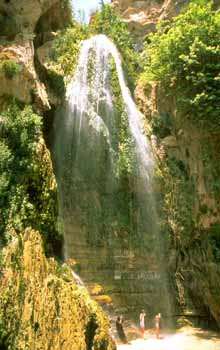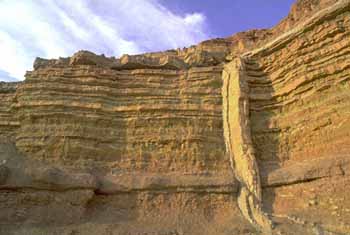Ein Gedi
The Bible records that 3,000 years ago David hid from King Saul at Ein Gedi. When David surprised the King and spared his life after finding him unarmed, Saul said David would succeed him on the throne. Located on the Dead Sea's western shore, Ein Gedi ("spring of the goat") is a desert oasis with waterfalls, pools of water and two large streams. It is a hiker's paradise with beautiful foliage, exotic birds and a range of wildlife, including rabbits, deer, ibex and leopards (don't worry, you're not likely to run into any). Ein Gedi served as a water source during biblical times (Joshua 15:62, I Samuel 24:1-2). The spring begins to flow 656 feet above the Dead Sea. About a half-hour's hike will take you to a waterfall and pool. Another trail leads to Shulamit Spring, the top of the falls and the Dodim Cave. Further along are the ruins of a Chalcolithic sanctuary believed to be from the year 4,000 B.C.E. From atop the trail it is possible to get a spectacular view of the Dead Sea, the mountains of Moab and Kibbutz Ein Gedi. The oasis is known for its thriving date palms, which are the principal crop of nearby Kibbutz Ein Gedi. The Kibbutz also owns a spa further south where you can take a hot mineral bath and coat yourself in Dead Sea mud. A camp site is also situated near the Dead Sea beach.
Just north of Ein Gedi (about 40 minutes south of Jerusalem) is one of Israel's most important archaeological sites, the Qumran National Park. It is in the caves of this ancient settlement that the Dead Sea Scrolls were discovered in 1947. Evidence has been found of people inhabiting the caves as early as the 8th-7th centuries B.C.E. The Romans stormed the area and occupied it for 20 years. In 132-135 C.E., Bar-Kokhba's fighters lived in the ruins. The community, referred to as the "Dead Sea Sect," to which the Dead Sea Scrolls apparently belonged lived in Qumran around 130 B.C.E. to 70 C.E.
|
| Previous | Next |






